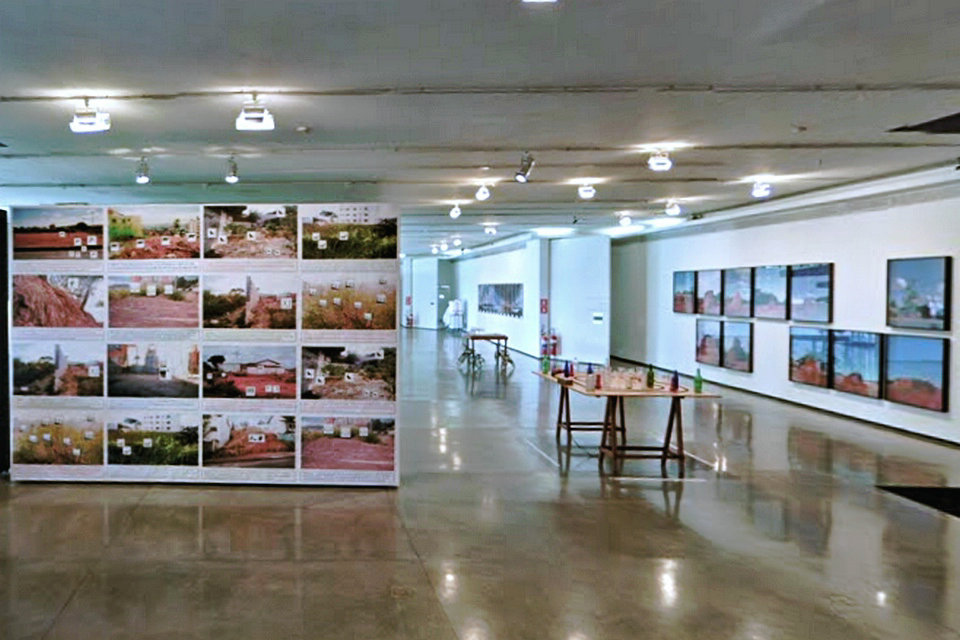32nd Panorama of Brazilian Art, Sao Paulo Museum of Modern Art


More than an exhibition, the 32nd Panorama is a platform for discussion and decantation of artistic processes. This is a reflection on the state of contemporary art which presupposes, especially in the last decade, an increasingly accelerated time. The consolidation of institutional programs, from the elaboration of culture incentive laws, the multiplication of public notices, projects of national and international residences, as well as the overheating of the market, interfered and lived with transformations in the artistic making.
Itineraries, itinerancies address two temporalities: the quick, immediate response to a route, and the decantation of long-term processes such as residences, coexistence in groups, networking. Exposure is one of the instances in which this break occurs. Panorama 2011’s proposals include an invitation for some artists to work together with MAM Educativo to discuss the role of pedagogical work in museums. Educators are not just service providers and content providers for the public, but key players in reflecting on the transits between the various roles people play – artist, curator, visitor, educator – and the way art itself , has a formative role. Artists enter the role of educators and Educativo in the exhibition space.
Some central questions guided the research: When does the roaming between the roles of educator and artist decant relevant experiences? When does roaming decant waste, remains, leftovers and routes? When does roaming decant frames, networks, circuits, and collaborations? When does roaming decant artwork and aesthetic facts? To what extent does the facilitation of displacement indirectly provide a homogenization of contemporary production? In what sense does continuous flow dilute some local specificities and identities in contemporary art? Does the specificity of the visual arts fade away as the contemporary artist travels constantly, works with any and all subjects, themes or ideas, as well as dialogues with cinema, sound or literature?
In view of these issues, the curator investigated the notions of permanence and movement in art, as well as time intensities in artistic actions and postures in the face of the urgency of always being on the move. Mapping some notions of circulation and displacement in artistic practice, the body of artists and thought allows us a broad view of the multiplicity of art in Brazil.
Museu de Arte Moderna de São Paulo
The Museu de Arte Moderna de São Paulo (MAM-SP) is a non-profit institution founded in 1948. Its collection comprehends over five thousand works of Brazilian modern and contemporary art, including traditional formats but also video, performance and installations.
MAM keeps an annual program of temporary exhibitions, and produces every two years the Panorama of Brazilian Art, which maps the Brazilian contemporary production. Considering the growing importance of Brazilian art in the global context, Panorama has become a relevant event in the international cultural circuit.
Trying to address the multiple necessities of the contemporary society and its diversity, MAM develops several cultural and educational activities such as courses, workshops, experimental movie sessions, music projects and presentation of performances for all publics, as well as avant-garde offerings such as audioguides with artworks’ description for blind people, and videoguides or sign language tours for deaf people. The Museum’s mission to spread Brazilian art and culture is also supported by its library, that offers more than 65 thousand titles and documents, and its publishing division, which develops catalogs, books and the “Moderno MAM” quarterly magazine.
Felipe Chaimovich, curator of MAM, declares: “I wish that MAM becomes more and more an experimental museum for contemporary art. The ArtProject allows us to reach a broader public, thus emphasizing our pedagogical mission, and stimulates the visitor to come to MAM. The partnership with the ArtProject is an important accomplishment for our institution.”